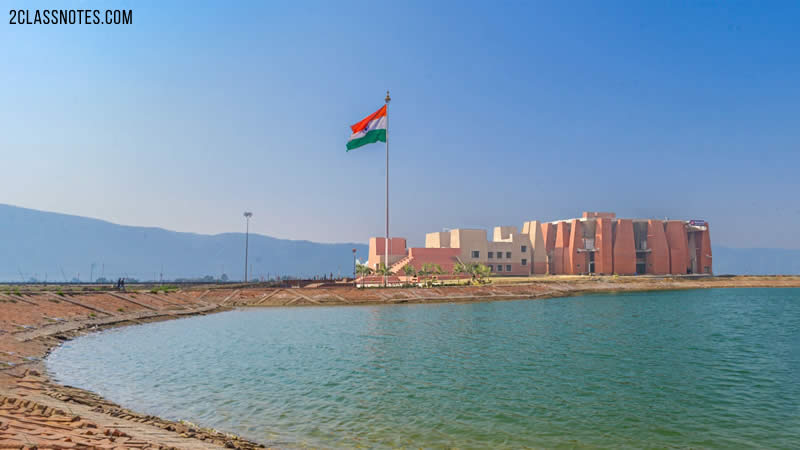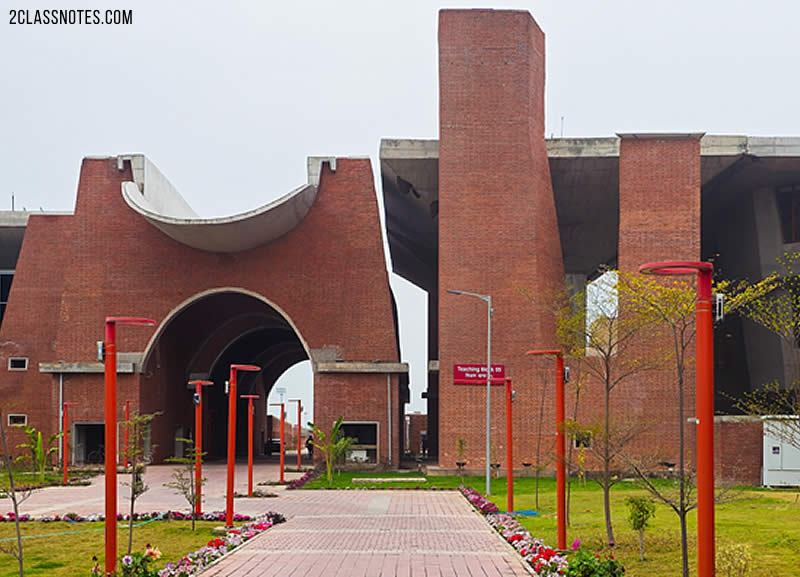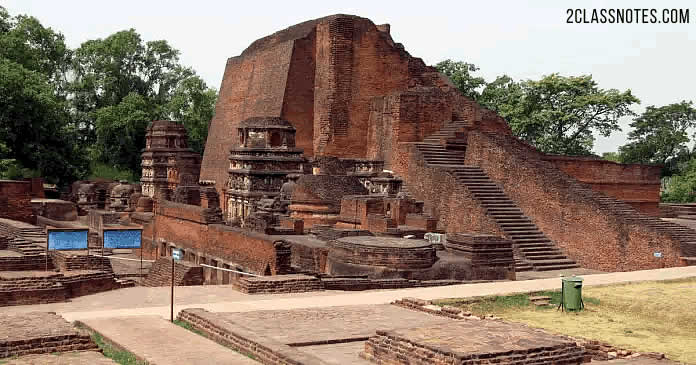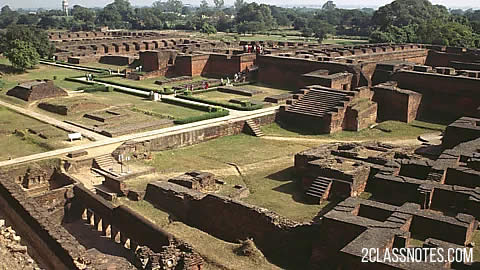PM Modi inaugurates new Nalanda University campus in Rajgir, visits the old ruins where Bakhtiyar Khilji burned down the ancient Nalanda
Before the inauguration, PM Modi called this a special day for India’s education sector and underscored that Nalanda has a strong connection with India’s glorious history.
On the 19th of June, Prime Minister Narendra Modi visited the ruins of ancient Nalanda, a UNESCO world heritage site, in Bihar’s Rajgir. PM Modi also inaugurated the new campus of the 1600-year-old Nalanda University.
PM Modi inaugurates new Nalanda University campus in Rajgir
Before the inauguration, PM Modi called this a special day for India’s education sector and underscored that Nalanda has a strong connection with India’s glorious history. “It’s a very special day for our education sector. At around 10:30 AM today, the new campus of the Nalanda University would be inaugurated at Rajgir. Nalanda has a strong connect with our glorious past. This university will surely go a long way in catering to the educational needs of the youth,” PM Modi posted on X.
It’s a very special day for our education sector. At around 10:30 AM today, the new campus of the Nalanda University would be inaugurated at Rajgir. Nalanda has a strong connect with our glorious past. This university will surely go a long way in catering to the educational needs… pic.twitter.com/sJh6cndEve
— Narendra Modi (@narendramodi) June 19, 2024
In his speech after inaugurating the new Nalanda University, PM Modi said, “It is a significant step in the journey of India’s development…It’s not just a name, but an identity and pride. Nalanda’s shutdown pushed India into darkness. Nalanda is a symbol of India’s academic heritage and vibrant cultural exchange….We need to revive the old tradition of Nalanda. I am happy that I got the opportunity to visit Nalanda within 10 days after swearing in as PM for the 3rd time…Nalanda is not just a name, it is an identity and respect. Nalanda is a value and mantra…fire can burn books but it can’t destroy knowledge…”
PM Modi also shared some pictures clicked during his visit to the excavated remains of ancient Nalanda. “Visiting the excavated remains of Nalanda was exemplary. It was an opportunity to be at one of the greatest seats of learning in the ancient world. This site offers a profound glimpse into the scholarly past that once thrived here. Nalanda has created an intellectual spirit that continues to thrive in our nation,” he wrote.
Visiting the excavated remains of Nalanda was exemplary. It was an opportunity to be at one of the greatest seats of learning in the ancient world. This site offers a profound glimpse into the scholarly past that once thrived here. Nalanda has created an intellectual spirit that… pic.twitter.com/UAKCZZqXn4
— Narendra Modi (@narendramodi) June 19, 2024
The University is conceived as a joint collaboration between India and East Asia Summit(EAS) countries. The inauguration ceremony was attended by several eminent people including the Head of Missions of 17 Countries.
Nalanda University’s net zero campus
The new Nalanda University campus, inaugurated by Prime Minister Narendra Modi, represents a blend of ancient architectural heritage and modern sustainability practices. The campus, located in Rajgir, Bihar, spans 455 acres and incorporates a “Net-Zero” approach, aiming to be carbon neutral and zero waste. This includes extensive use of solar power with a 6.5 MW solar farm, a 1.5 MW biogas plant, and over 100 acres dedicated to water bodies and 300 acres to green landscaping.

The design of the university pays homage to the ancient Nalanda University, which was a renowned centre of learning in ancient India. The infrastructure uses Compressed Stabilized Earth Blocks (CSEB) instead of traditional burnt clay bricks, contributing to environmental sustainability. Efficient water management practices, including the indigenous ‘Ahar-Pyne’ system, and Decentralized Waste Treatment (DeWAT) systems, further enhance its eco-friendly credentials.
Architecturally, the campus features thick cavity walls utilizing Desiccant Evaporative (DEVAP) technology for efficient thermal resistance, ensuring comfortable indoor climates with minimal energy use.
The new campus stands as a testament to India’s commitment to sustainable development and the preservation of cultural heritage, while also symbolizing the country’s efforts to restore the ancient glory of Nalanda University.

The unmatched glory of Nalanda
Nalanda University, established in the 5th century CE in Bihar, India, was one of the world’s first residential universities and an esteemed centre for education in ancient India. At its peak, it housed over 10,000 students and 2,000 teachers, attracting scholars from across Asia, including China, Korea, Japan, Tibet, Mongolia, Turkey, Sri Lanka, and Southeast Asia. The university offered a wide range of subjects, including theology, grammar, logic, astronomy, metaphysics, medicine, and philosophy.

Nalanda was distinguished by its impressive infrastructure, including multi-story buildings, vast libraries, and meticulously maintained gardens and lakes. The library, known as Dharma Gunj (Mountain of Truth), was a treasure trove of knowledge, comprising millions of manuscripts and texts stored in three large multi-story buildings. These texts were invaluable resources for scholars and researchers of the time.

How Bakhtiyar Khilji destroyed Nalanda – the treasure trove of knowledge
Through Nalanda, India was disseminating its ancient Vedic knowledge and science to the local students as well as those arriving from beyond the periphery our country. However, the prosperity and intellectual prominence of Nalanda came to an abrupt end in the late 12th century. In 1193 CE, the Turkish Islamic fanatic Bakhtiyar Khilji invaded Bihar and set his sights on Nalanda. Historical references, such as those by Persian historian Minhaj-i-Siraj in the “Tabaqat-i Nasiri,” describe how Khilji’s troops ransacked the university and set its grand library ablaze. The fire burned for several months, consuming centuries of accumulated knowledge and wisdom. The destruction of Nalanda marked a significant loss for the world of academia and is often seen as a symbol of the cultural and intellectual devastation brought by invasions. It is said that over 9 million manuscripts were burnt down by Khilji and his troops.
Describing the attack by the army of the Mamluk Dynasty of the Delhi Sultanate under Bakhtiyar Khilji on Nalanda and how Brahmins were killed, Minhaj-i-Siraj wrote, “Muhammad-i-Bakht-yar, by the force of his intrepidity, threw himself into the postern of the gateway of the place, and they captured the fortress, and acquired great booty. The greater number of the inhabitants of that place were Brahmans, and the whole of those Brahmans had their heads shaven; and they were all slain. There were a great number of books there; and, when all these books came under the observation of the Musalmans, they summoned a number of Hindus that they might give them information respecting the import of those books; but the whole of the Hindus had been killed. On becoming acquainted [with the contents of those books], it was found that the whole of that fortress and city was a college, and in the Hindui tongue, they call a college Bihar.”
The sacking of Nalanda had far-reaching implications. The loss of its vast repositories of knowledge dealt a severe blow to the Vedic as well as Buddhist education and scholarship in the region. Scholars and students were either killed or dispersed, leading to a decline in the region’s status as a hub of intellectual and cultural exchange.
Reviving Nalanda: An Injustice Undone
After Ram Mandir in Ayodhya which was razed by Mughal tyrant Babur’s army, the revival of Nalanda is a grave injustice and damage undone. The ancient Nalanda University stood as a beacon of learning, and the enduring quest for knowledge that transcends centuries and civilizations and the new university would certainly aim to take that broken legacy forward.
Re-establishing Nalanda in Rajgir, Bihar, not only honours its ancient legacy but also reaffirms, as emphasised by PM Modi, India’s commitment to reclaiming its position as a global leader in education. This revival is crucial for preserving cultural heritage and fostering intellectual renaissance.
While Khilji could burn the books and kill the Kafirs, the Hindus have doggedly strived and continue to do so to reclaim the sites of historic, cultural and religious significance be it the Ayodhya Ram Mandir, Nalanda in Bihar or the ongoing struggle for the rightful abode of Lord Kashi Vishveshwara in Varanasi and the Janmabhoomi of Lord Krishna in Mathura.
 Class Notes NCERT Solutions for CBSE Students
Class Notes NCERT Solutions for CBSE Students







